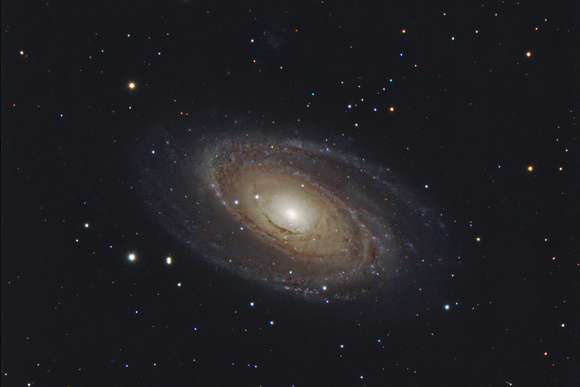Canon 350D Hap Griffin Baader Mod70x180sec at iso 1600
30 Darks/Flats/Bias
Celestron 9.25 reduced 0.6350% Crop
2008 SCT User Contest Winner: DSO with Non-Astro Camera
M81 (NGC 3031 or
Bode's Galaxy) is a large, bright, classic spiral galaxy 12 million light years away in the constellation
Ursa Major. It is the dominant member of the
group of galaxies that carry it's name- one of the
nearest groups to our
local group.
A few tens of million years ago a close encounter occurred between the galaxies M81 and
M82. During this event, larger and more massive M81 has dramatically deformed M82 by gravitational interaction. The encounter has also left traces in the spiral pattern of M81, first making it overall more pronounced, and second in the form of the dark linear feature in the lower left of the nuclear region. The galaxies are still close together, their centers separated by a linear distance of only about 150,000 light years.
The spiral arms, which wind all the way down into the nucleus, are made up of young, bluish, hot stars formed in the past few million years. They also host a population of stars formed in an episode of star formation that started about 600 million years ago. A number of sinuous dust lanes also wind all the way into the nucleus of M81.
The galaxy's central bulge contains much older, redder stars. It is significantly larger than the Milky Way's bulge. A
black hole of 70 million solar masses resides at the center of M81. The black hole is about 15 times the mass of the Milky Way's black hole. Hubble research shows that the size of the central black hole in a galaxy is proportional to the mass of a galaxy's bulge.
A
nice movie inspecting the Hubble image of M81.
Satellite dwarf galaxy
Holmberg IX can be seen above M81.
February 22, 2009


